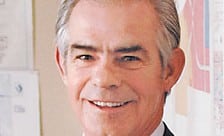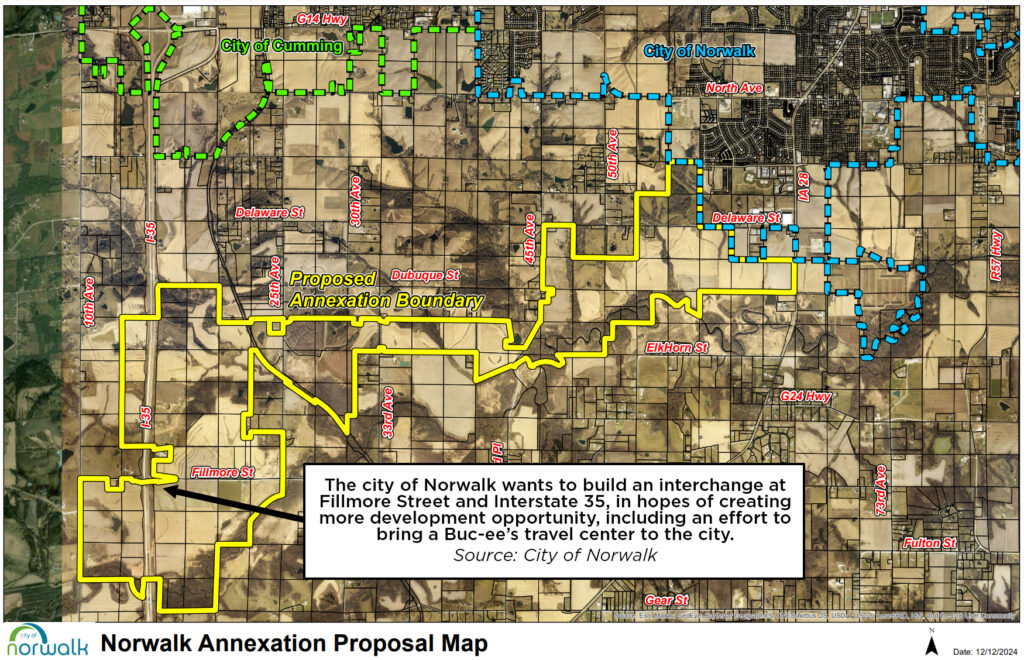Bridging a (river) gap to the future

Let’s face it. When your company owns a piece of the future, it’s easy to get excited about a bridge that will lead to it.
Gerry Neugent, president and chief operating officer of Knapp Properties Inc., is excited.
In the nearly 20 years that he has held that title, the land company has been acquiring parcels south of the Raccoon River with an eye to development sometime in the future.
A key aspect of that development of 1,840 acres in Dallas and Madison counties is the construction of a bridge. Raccoon River Land Co., a partnership between Knapp Properties and businessman Jim Cownie, hopes to start construction on the bridge next fall.
It would be a remarkable groundbreaking for several reasons.
Raccoon River Land Co. will pay most of the $5.4 million to build the bridge and a road to it. Hallett Materials will make a financial contribution, and Martin Marietta Materials Inc. has provided land that will carry a road to the bridge.
Mark Wandro, executive vice president of Snyder & Associates Engineers and Planners LLC, has worked on the project for the last four years. He is unaware of any other privately funded bridge that will be a part of a major roadway.
And being part of a major roadway is a key part of the project.
The bridge will serve the southward expansion of West Des Moines, linking Alice’s Road in Waukee to 105th Street in West Des Moines, venturing across the river and connecting with what will be the proposed southwest connector from Iowa Highway 5 to Interstate 80.
For now, the area south of the Raccoon River and west of Interstate 80 is “one of those areas where you can see it but you don’t know how to get to it,” said West Des Moines Community and Economic Development Director Clyde Evans.
The tie-in with 105th Street/Alice’s Road also is important for developments planned in Waukee and West Des Moines. For West Des Moines, the street marks the western boundary of its Grand Technology Gateway, which includes the Microsoft Corp. data center that is under construction at Grand Avenue and South 88th Street.
From an engineer’s viewpoint, the bridge and the north-south transporation route create what Wandro called “route continuity.”
“If you look at Greater Des Moines, with its emphasis on east and west streets, the area lacks route continuity,” he said.
West Des Moines and Waukee have lobbied for an interchange to be added to a recently completed bridge that spans Interstate 80.
Evans said 105th Street/Alice’s Road is viewed as a major arterial roadway for planning purposes, with projected traffic volume of between 35,000 and 50,000 vehicles a day.
That traffic means that the southern portion of the Raccoon River Land Co. development, land that would be near the proposed connector, could have some mixed commercial development. However, the property has many features that will be preserved, and for that reason residential development will include estate-style homes.
River bluffs, some nearly 100 feet tall, line the south side of the river. In addition, archeological surveys have identified Native American burial mounds that will be preserved. Farmland could be converted to indigenous vegetation.
“It’s such an incredible place, with the bluffs and the river,” Neugent said.
Because all of those elements combine in one large property, Raccoon River Land Co. has gone through a long review process that includes the Iowa Department of Natural Resources and U.S. Army Corps of Engineers, which must be convinced that the bridge is a necessity.
And as Evans noted, for now it is a place easier seen than visited.
Neugent points out that anyone approaching the river from West Des Moines on the north has to backtrack through Dallas, Polk, Warren and Madison counties to reach the south side.
With West Des Moines joining in the application for approval of the bridge from the Army Corps of Engineers, Raccoon River Land Co. is in a wait-and-see mode before declaring a construction date. Any construction must wait out the completion of the nursery season of the endangered Indiana brown bat, which by official designation concludes in October.
Still, Neugent and Wandro are optimistic.
“There are no guarantees, but things are on schedule,” Neugent said.











